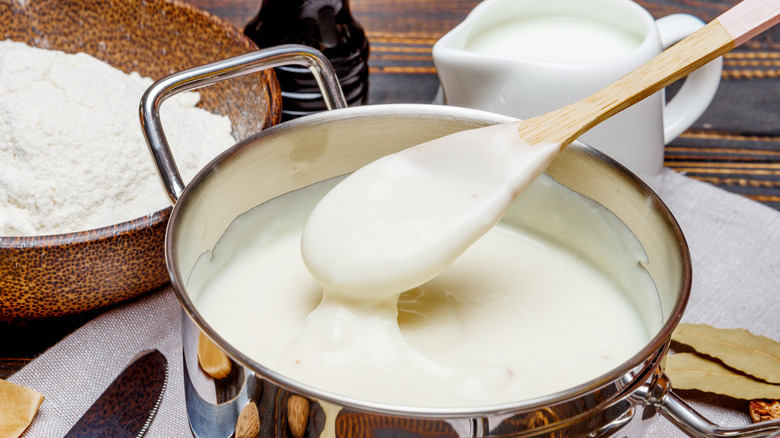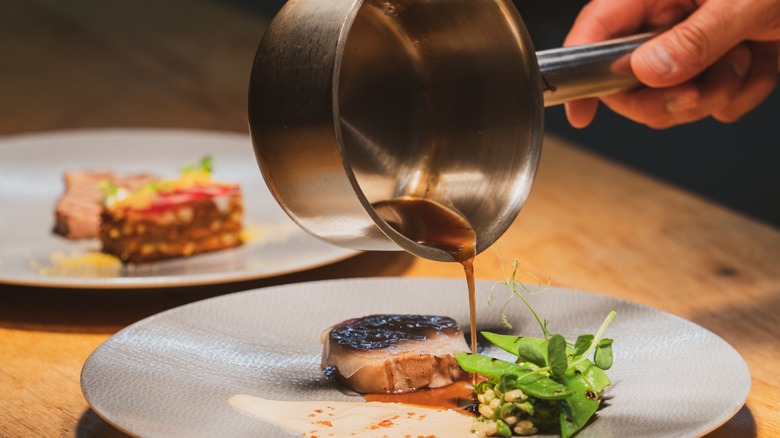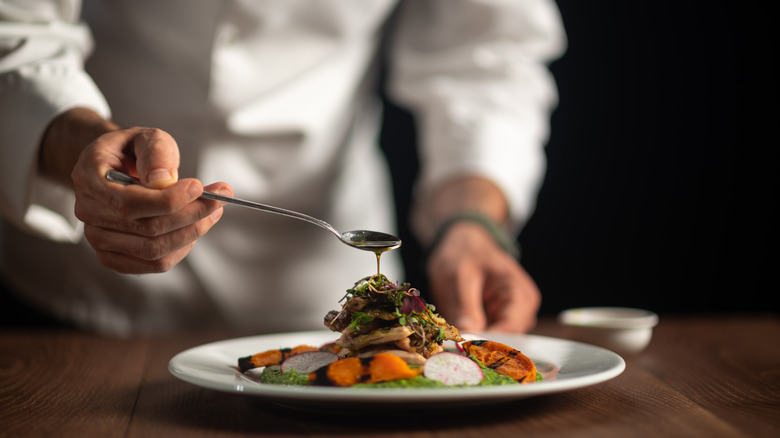A Spoon Is All You Need To Test The Thickness Of Your Sauce
If you've ever browsed the gadgets section in a kitchen store, you know that there's a tool for just about anything. There's a special device for timing hard-boiled eggs, and single-use timers for cooking a turkey, but no inventor has yet to come up with a single-use tool to tell you when a sauce is thickened. This is probably because nothing beats testing out a sauce with the back of a spoon.
When you're stirring a sauce in a pot or a pan, it's hard to know exactly when it is ready to serve. When you dip a spoon into the sauce, however, if the sauce is ready it will cling to the slightly cooler surface of the spoon. The key to testing is to use a different spoon than the one you're using to cook. That way your testing spoon will be at the right temperature when it's time to test the sauce.
What to look for when testing sauce
There's a fine art to making sauce, and it's important to get it right. Professional kitchens that follow a brigade style of hierarchy even typically have a position whose main responsibility is making all of the sauces, soups, and gravies, which is known as the saucier. While you don't need to work a shift at Le Bernardin to make a decent mornay sauce, you do need to make sure you don't take it off the stove at the wrong time.
Almost every sauce recipe will tell you to test for thickness with the back of a spoon, but what exactly are you looking for? If you're making a sauce and you think you're getting close to the right consistency, grab a clean spoon and give it a dip. If the sauce creates a thin layer without sliding off, it's ready. If the sauce that's stuck to the spoon is very thick, you need to add more liquid. If it doesn't stick at all, more thickening is needed. It's that simple.
Use a cool spoon
Testing sauce with a spoon is very simple, however, as already mentioned, be sure to use a different spoon than the one you're using to cook. That's because the spoon that's been stirring hot sauce will be at the same temperature as what's in the pot. Instead, grab a fresh spoon out of the silverware drawer and give it a quick dip. If you're still not sure how thick the sauce is, drag a fingertip through the center of the sauce on the back of the spoon; if you can make a distinct line through the sauce, and it stays that way for a couple of seconds, the sauce is ready.
Regular metal spoons work just fine for testing sauce, but you can also use wooden or silicone cooking spoons and get the same results. Plus, if you're making pasta, a wooden spoon will come in handy for boilovers. Just make sure that the spoon is clean and dry so that the sauce has an ideal surface for sticking. Once you get the hang of it, you'll consistently turn out the silkiest sauces that coat steaks and seafood perfectly — just like a professional saucier.


